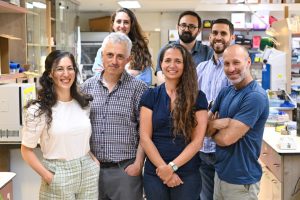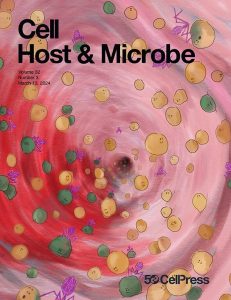Gut Bacteria and the Immune System
Technion researchers discovered that bacteria in the intestine are capable of changing their “software” in reaction to inflammation – which could have an impact on our immune system
Gut bacteria have emerged as a focal point of scientific exploration, with their intricate roles in our metabolism, nutrition, and overall health coming into sharp focus. New research from the Technion has made a discovery that could lead to a better understanding of and treatment for inflammatory bowel diseases (IBD) such as colitis and Crohn’s disease.
Over millions of years of coevolution with humans, gut bacteria have become indispensable for our immune system’s proper functioning. The gut is a constantly changing organ, undergoing structural, mechanical, and chemical alterations. Gut bacteria must adapt to this dynamic environment. A major mechanism that enables such dynamic adaptation is their ability to undergo rapid genomic changes due to a trait known as plasticity – a facet that Professor Naama Geva-Zatorsky and her team in the Ruth and Bruce Rappaport Faculty of Medicine have been investigating together with their collaborators.
The research team of this study included Shaqed Carasso, Rawan Zaatry, Haitham Hajjo, Dana Kadosh-Kariti, and Dr. Tal Gefen, and it was performed in collaboration with scientists from the U.S., Spain, and Israel: Dr. Michael Coyne, Prof. Laurie Comstock, Prof. Juan Joffre, Dr. Jeffrey Kate, Technion graduate Dr. Itai Sharon from the Migal Galilee Research Institute, and Prof. Yehuda Chowers and Dr. Sigal Pressman from the Rambam Medical Center.

From left to right: Top row: Rawan Zaatry, Shaqed Carasso, Haitham Hajjo. Bottom row: Dana Kadosh-Kariti, Dr. Itai Sharon, Prof. Naama Geva-Zatorsky, Dr. Tal Gefen
The study focused on species of the Bacteroidales order, some of the most abundant species in the human gut microbiome. While analyzing more than 2,000 healthy and sick individuals and conducting preclinical research in mice models, the Technion scientists identified distinct patterns of DNA inversions in health and disease. These reversible DNA inversions flip the orientation of key gene segments, switching ON and OFF production of molecules. Interestingly, in Bacteroides fragilis, DNA inversions turned OFF the production of polysaccharide A, a molecule coating the bacteria that beneficially induces regulatory T cells – a specialized immune cell type that suppresses excessive inflammation and maintains gut homeostasis.
The likely culprit? Bacteriophages, or viruses that infect bacteria. Further examination of fecal samples from IBD patients revealed a striking pattern: the PSA promoter was predominantly in the OFF state, correlating with increased levels of B. fragilis-associated bacteriophages. Subsequent experiments with germ-free mice, colonized with B. fragilis in the presence of bacteriophages, highlighted a significant increase in B. fragilis with the OFF state and a notable reduction in populations of Treg cells.
Remarkably, the findings reveal an ingenious adaptation strategy used by gut microbes, allowing them to dynamically reprogram gene expression based on local conditions like inflammation or viral attacks. However, this biological shape-shifting may worsen disease by crippling production of molecules like PSA that regulate the immune system and attenuate gut inflammation.
“This research offers a critical insight into the intricate interactions between gut bacteria and the immune system in inflammatory bowel disease. Our explanation is that the same genomic flexibility that was developed through evolution provides the bacteria with functional plasticity, thereby helping them to adapt to intestinal disease,” commented Prof. Geva-Zatorsky. “It opens doors for targeted interventions aimed at restoring the balance of gut microbiota in IBD patients.”

Cover page photo: Cell Host & Microbe – How bacteriophages (in purple) influence bacterial functionality through DNA inversion – a bacteriophage-induced bacterial functional alteration that impacts the mammalian host immune system. This alteration is illustrated by the change in color of the bacteria from yellow to green upon encounter with bacteriophages. Illustration Credit: Tomm Blum from the Geva-Zatorsky lab
The research was supported by the European Research Council (ERC), the Technion President’s Fund, the Ruth and Bruce Rappaport Cancer Research Center, the Rappaport Family Institute for Research in the Medical Sciences, the Council for Higher Education (Alon Scholarship), the Israel Science Foundation, the Dan and Betty Kahn Foundation, Seerave Foundation, CIFAR, Human Frontier Science Program, and the Gutwirth Fund.
Click here for the paper in Cell Host & Microbe



